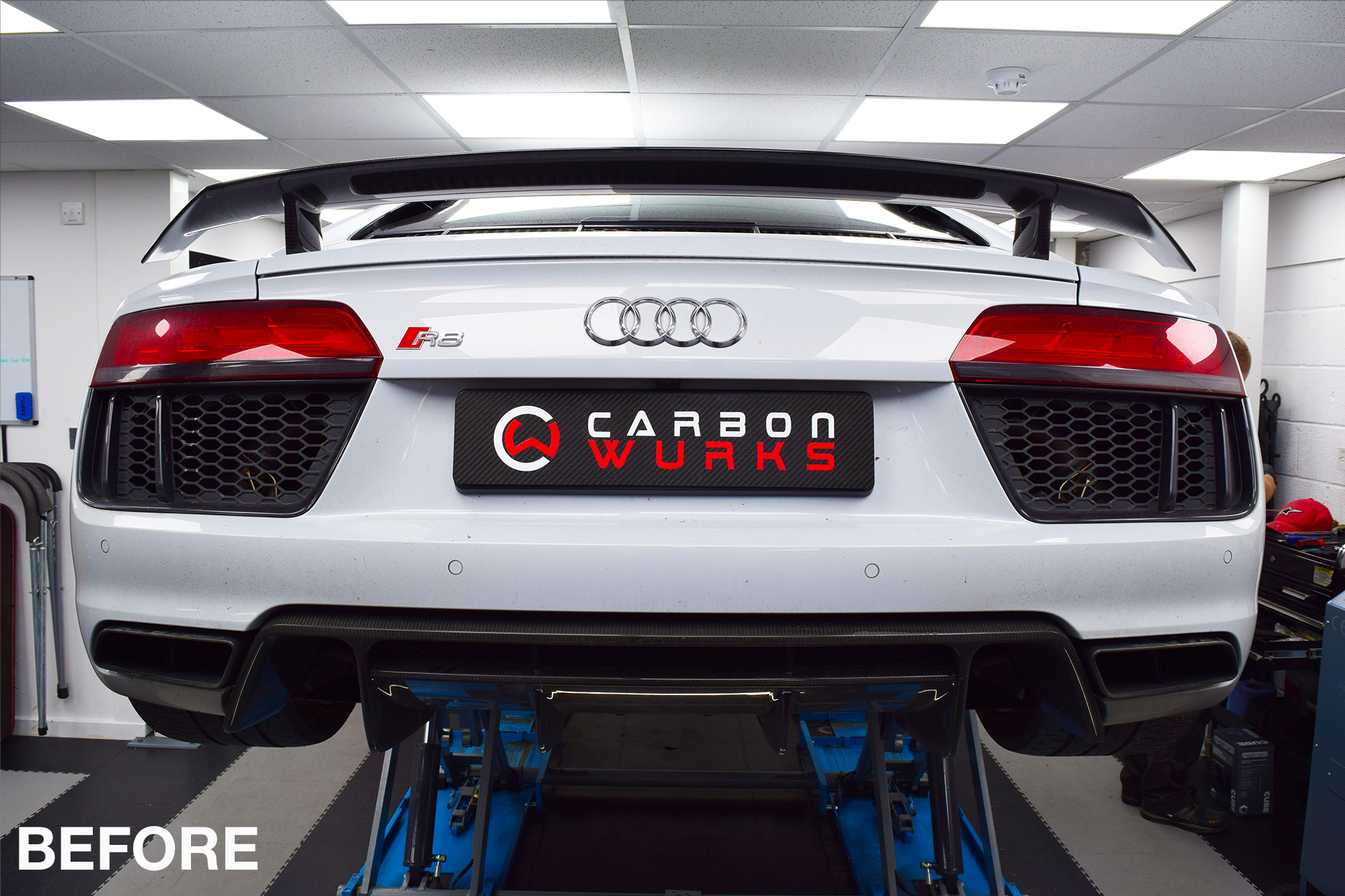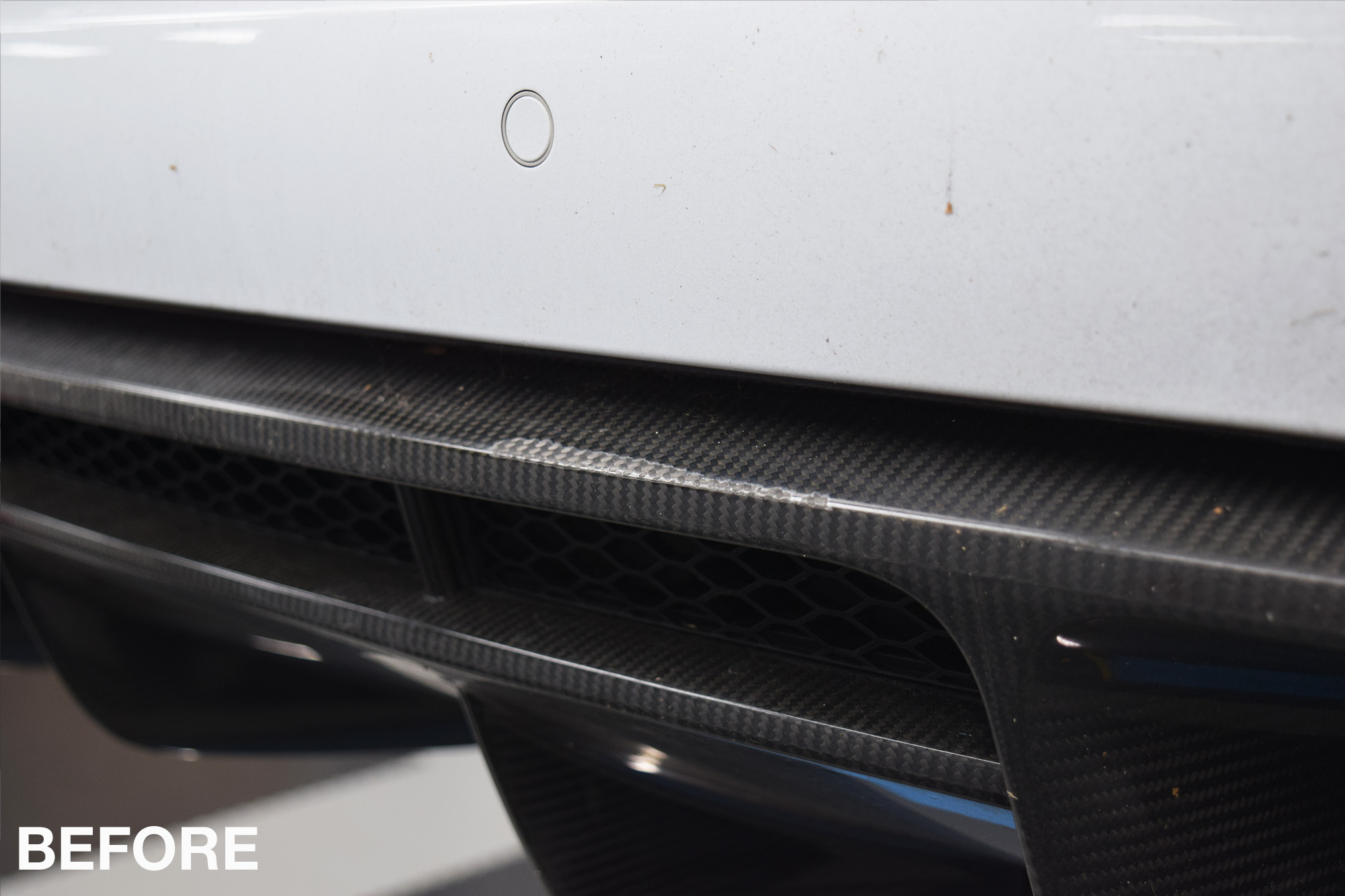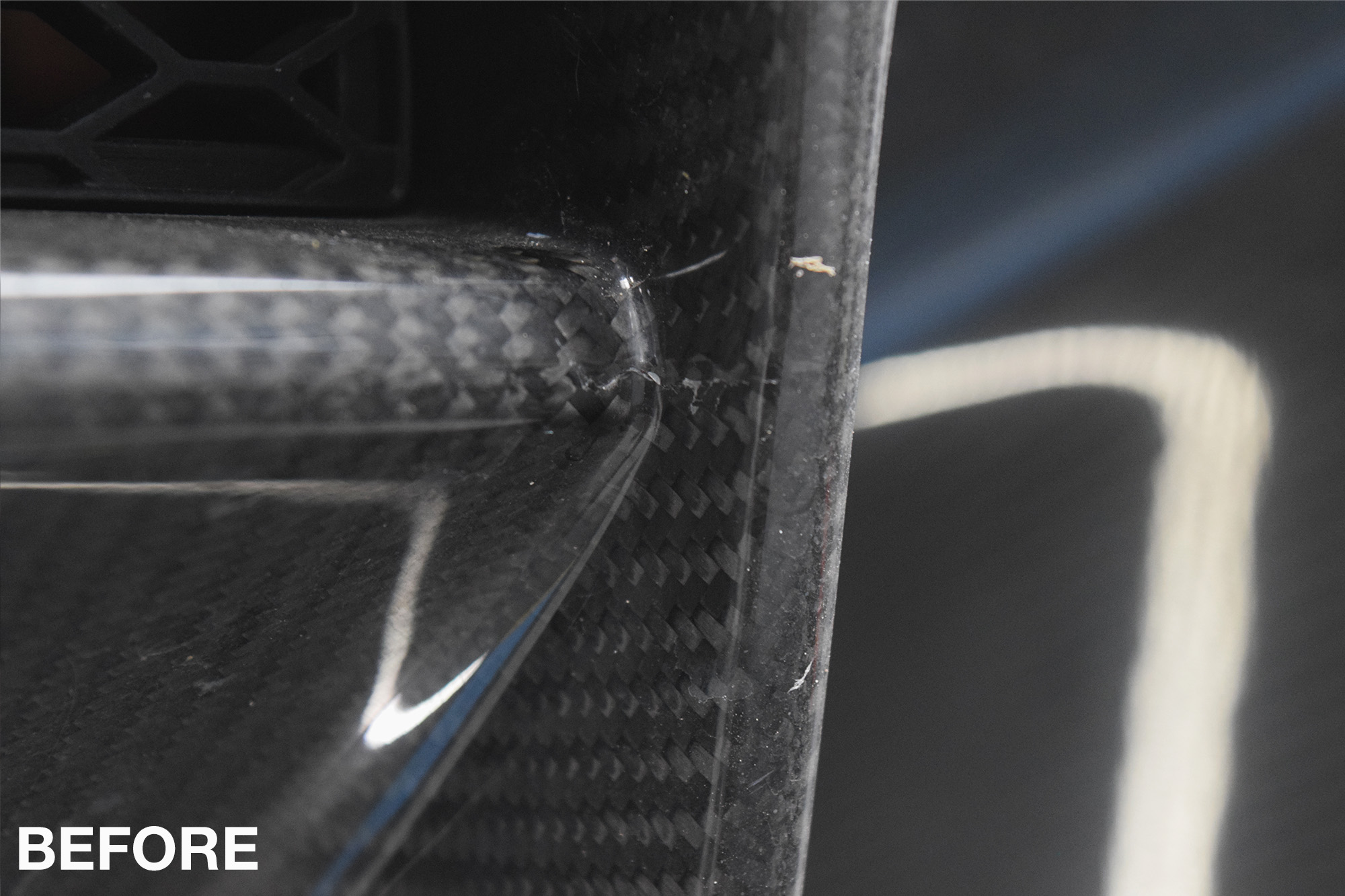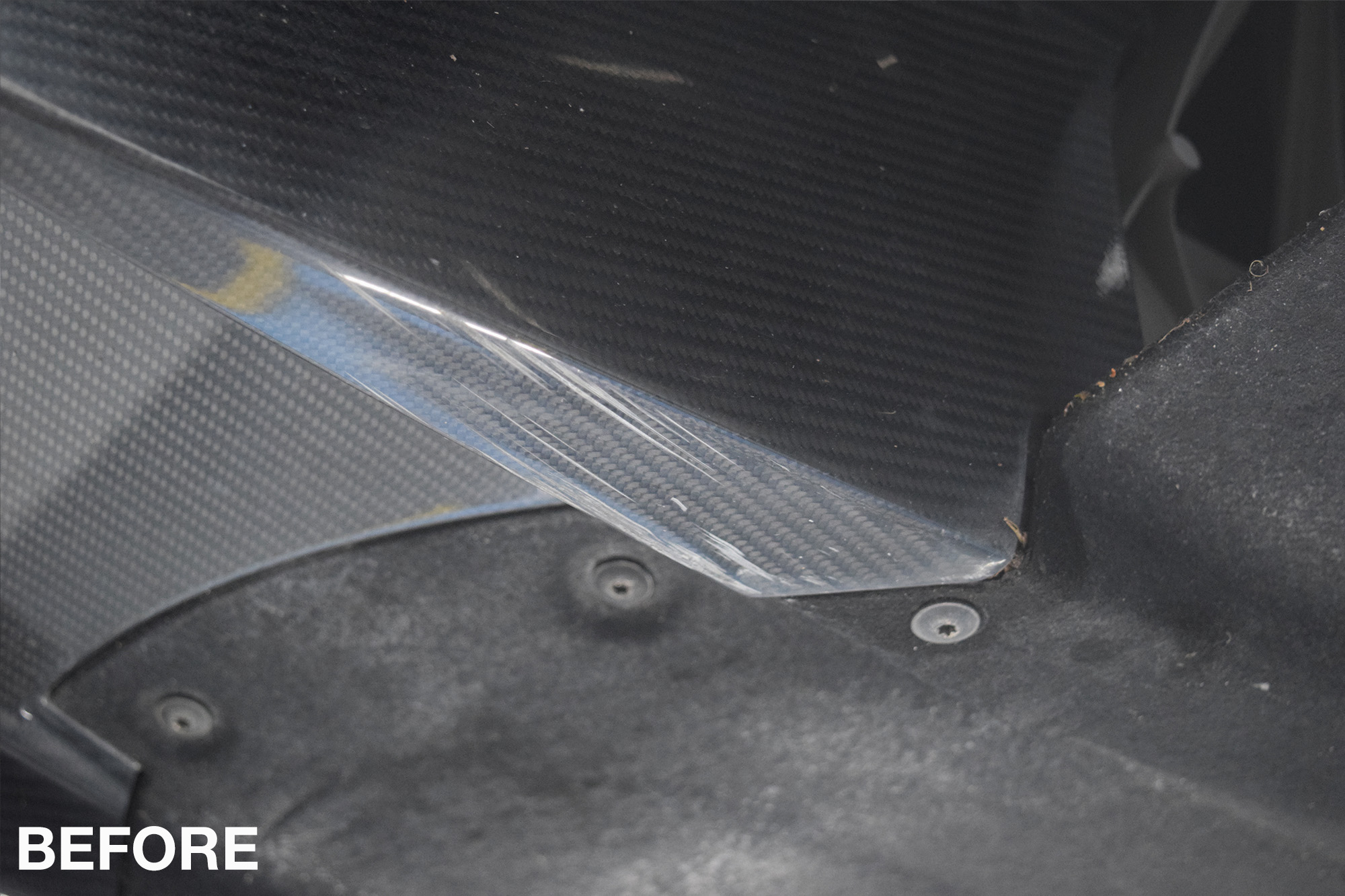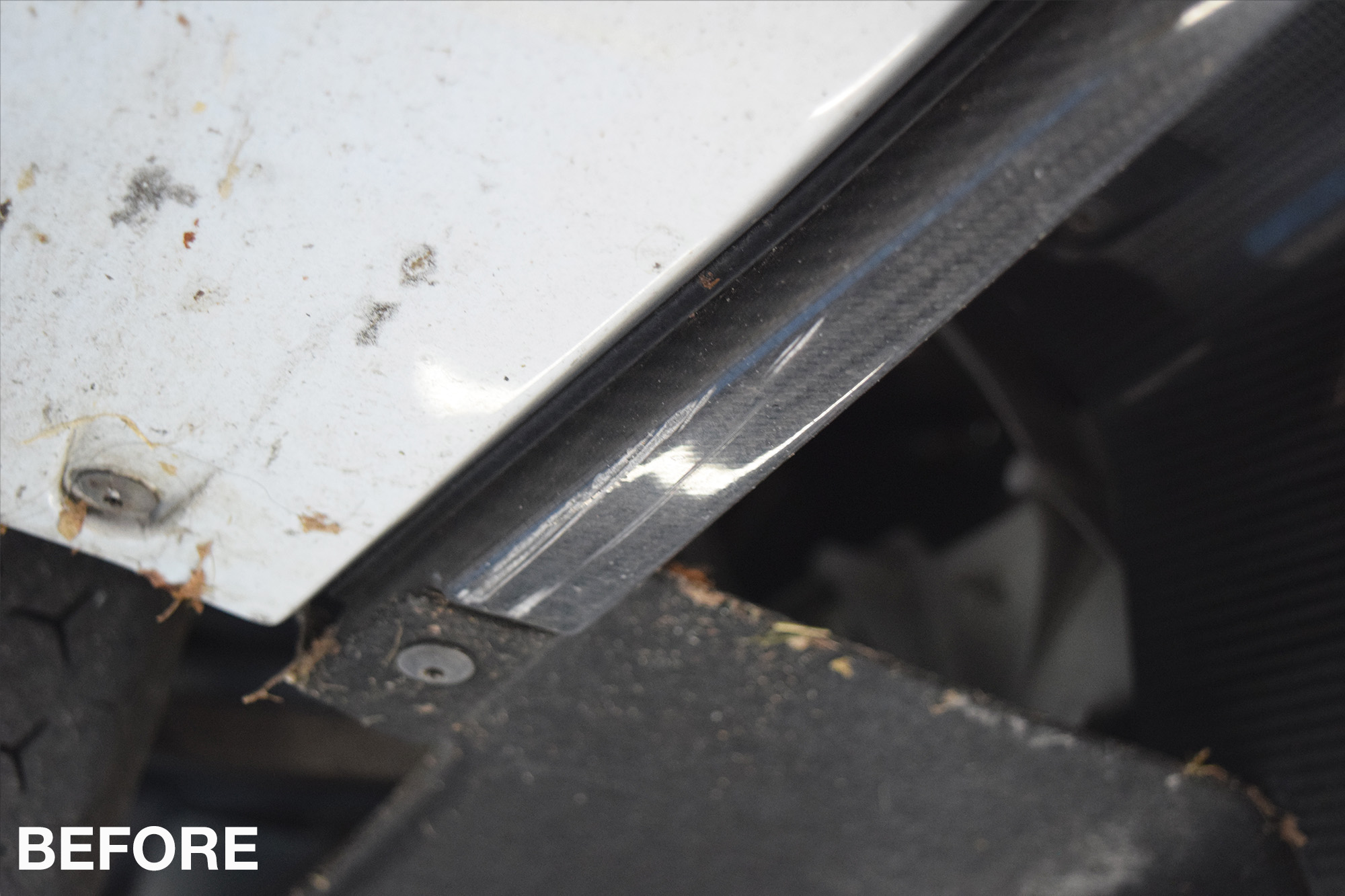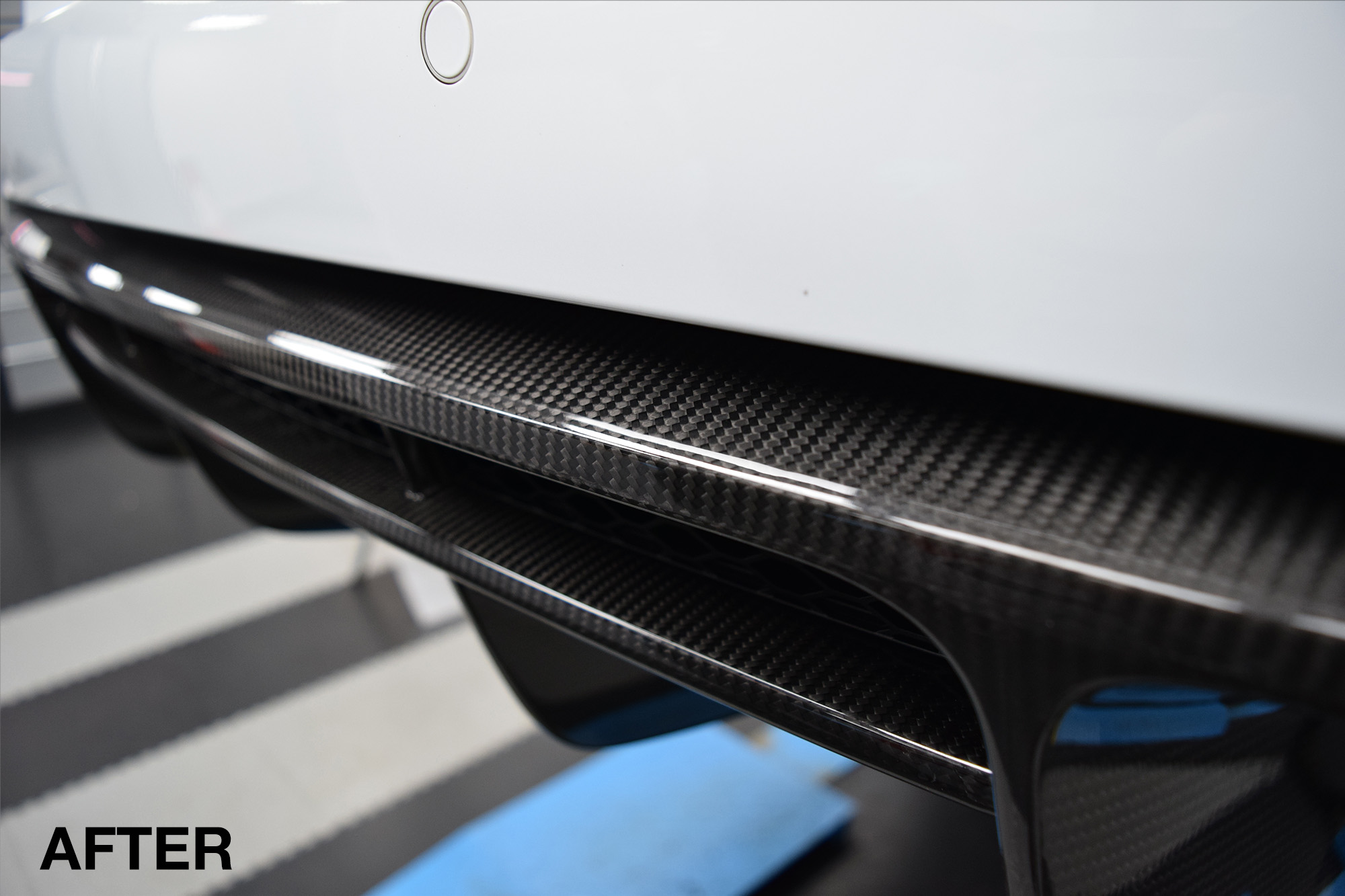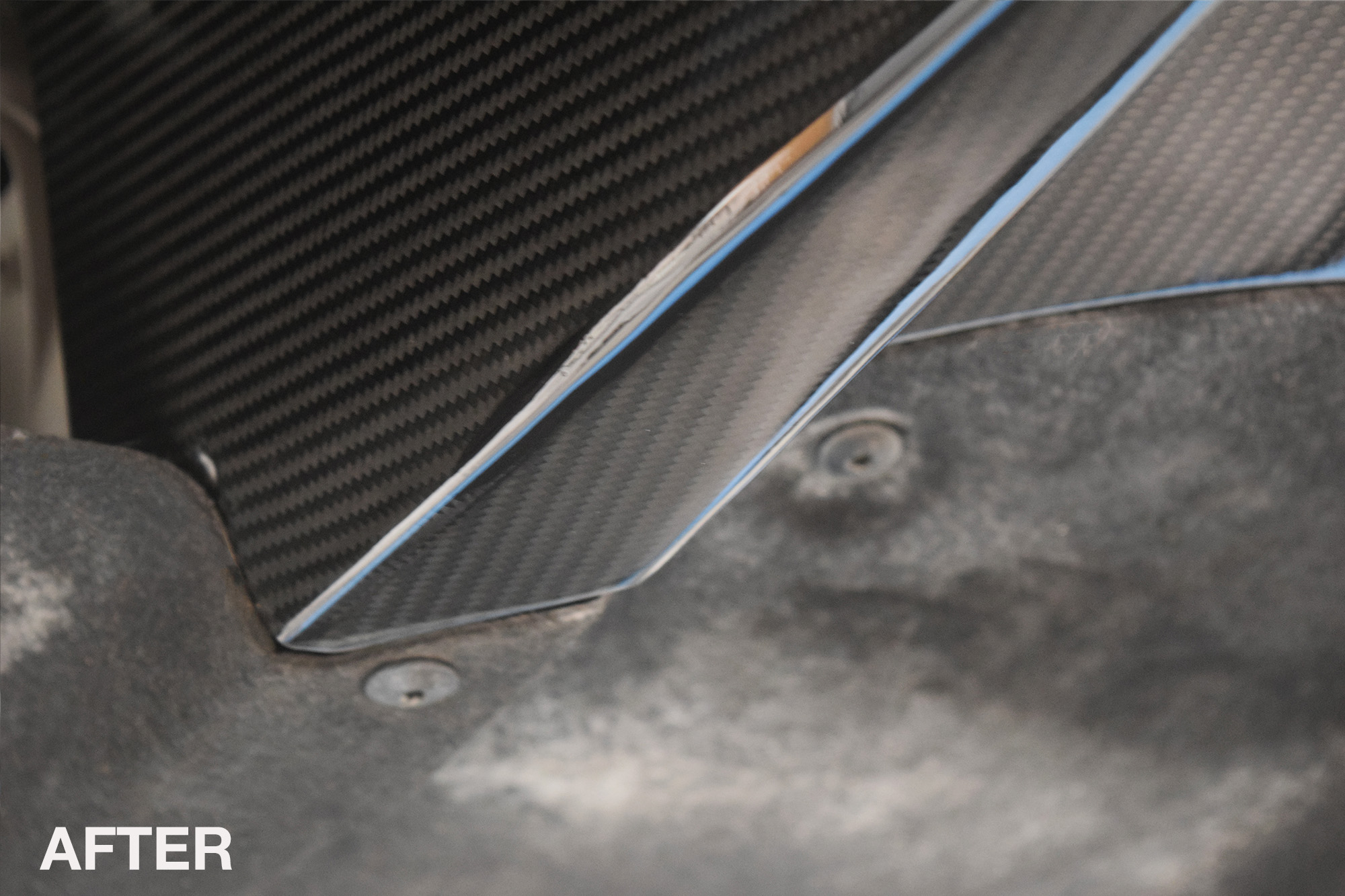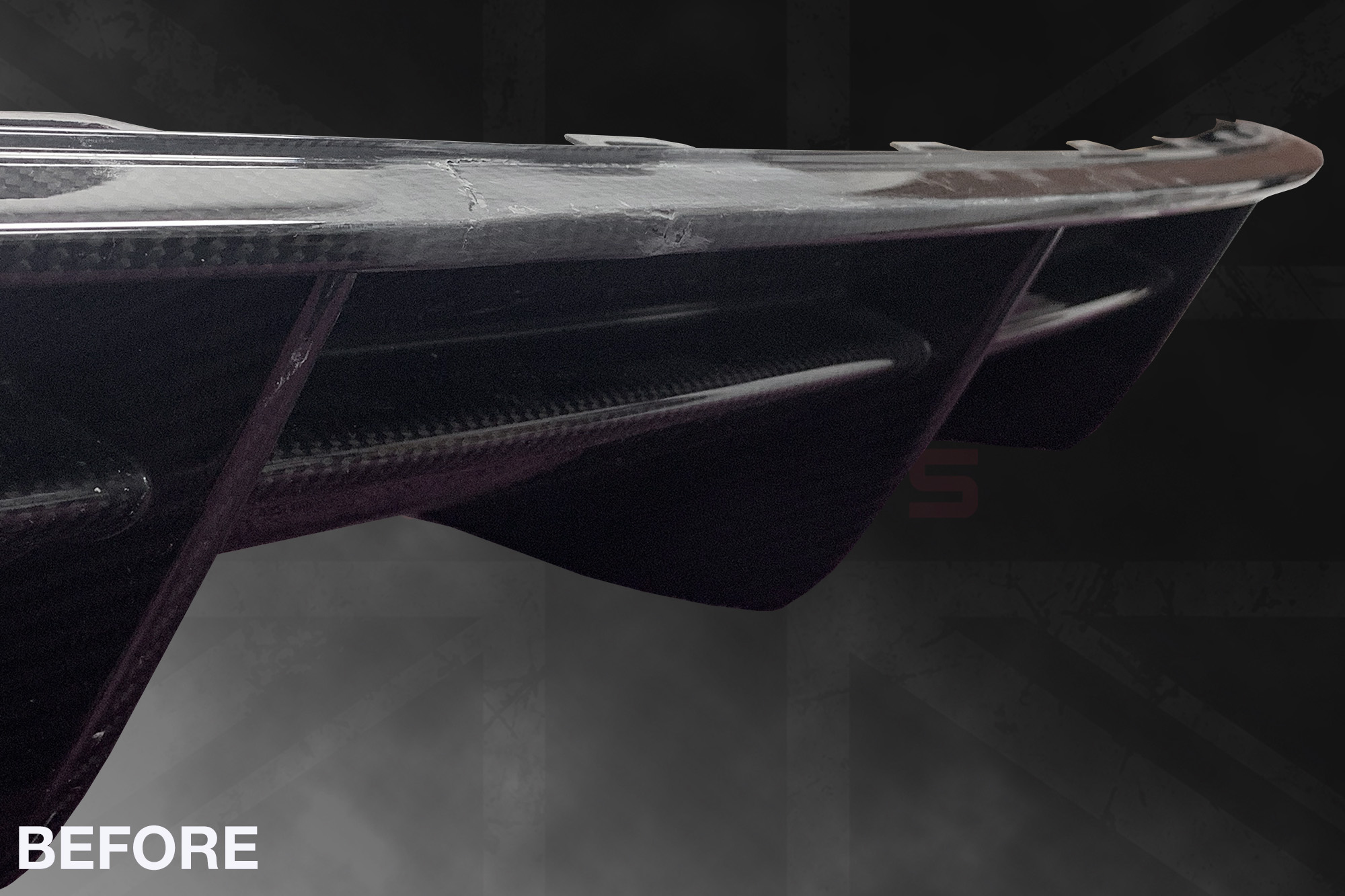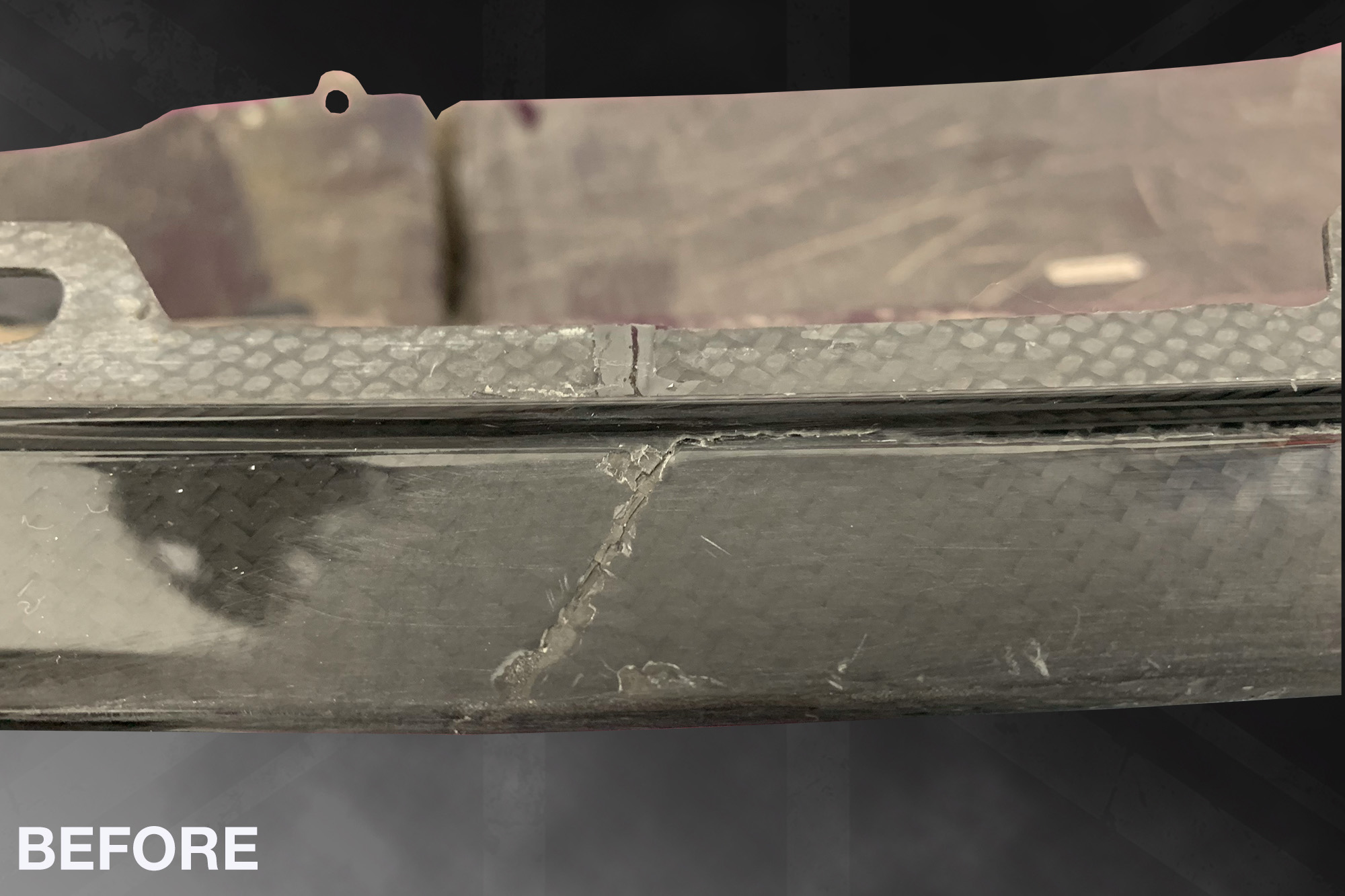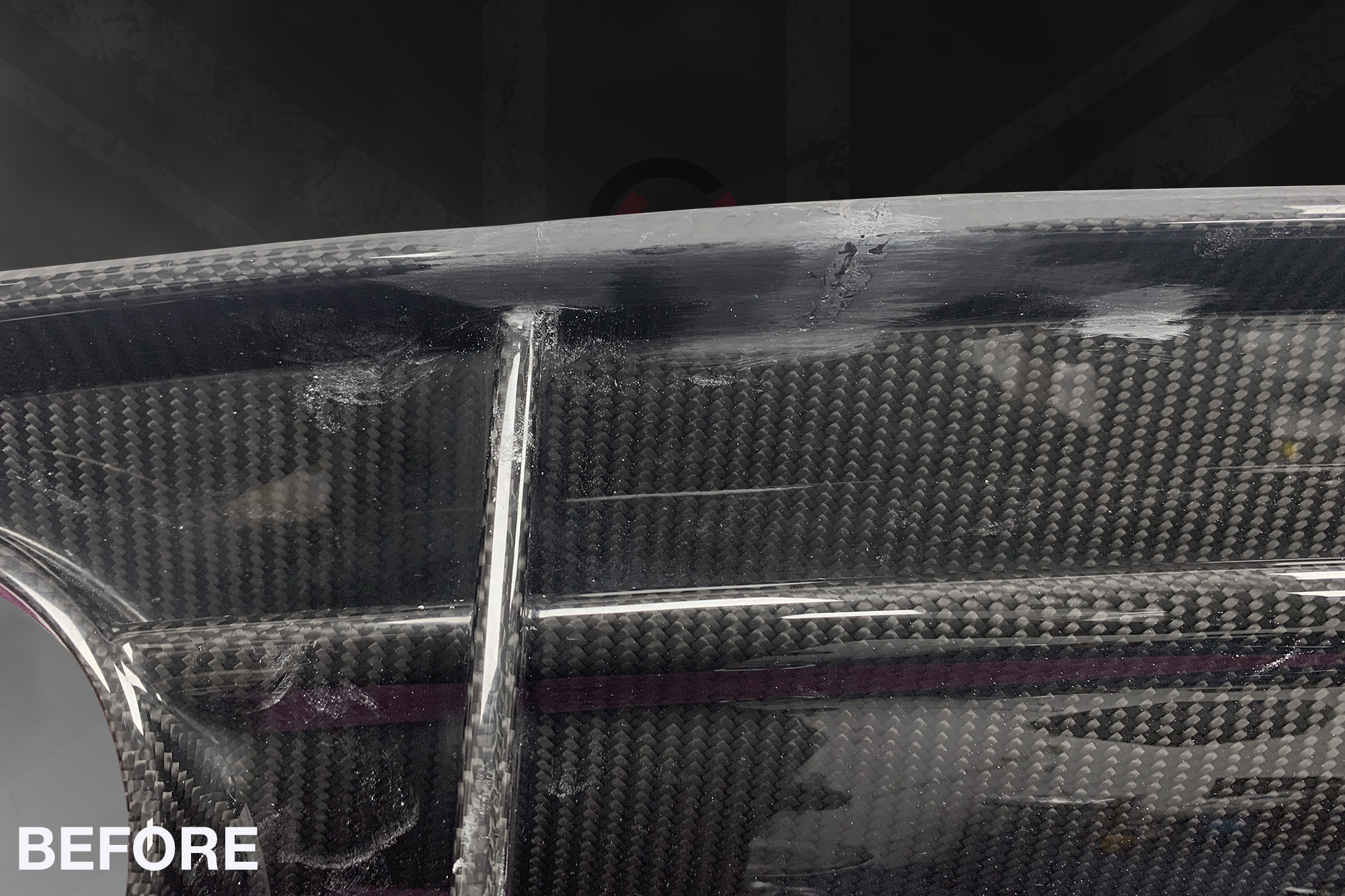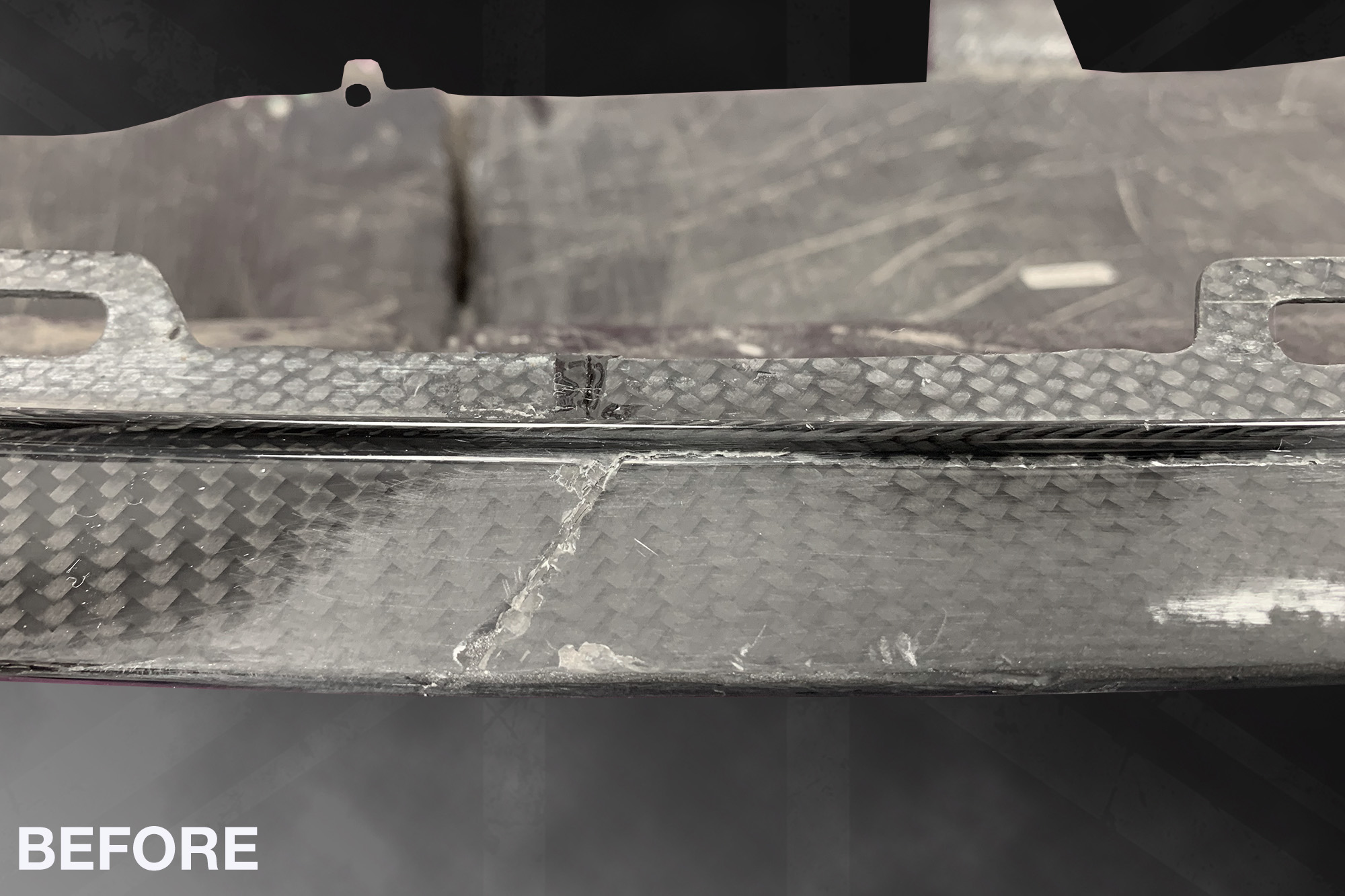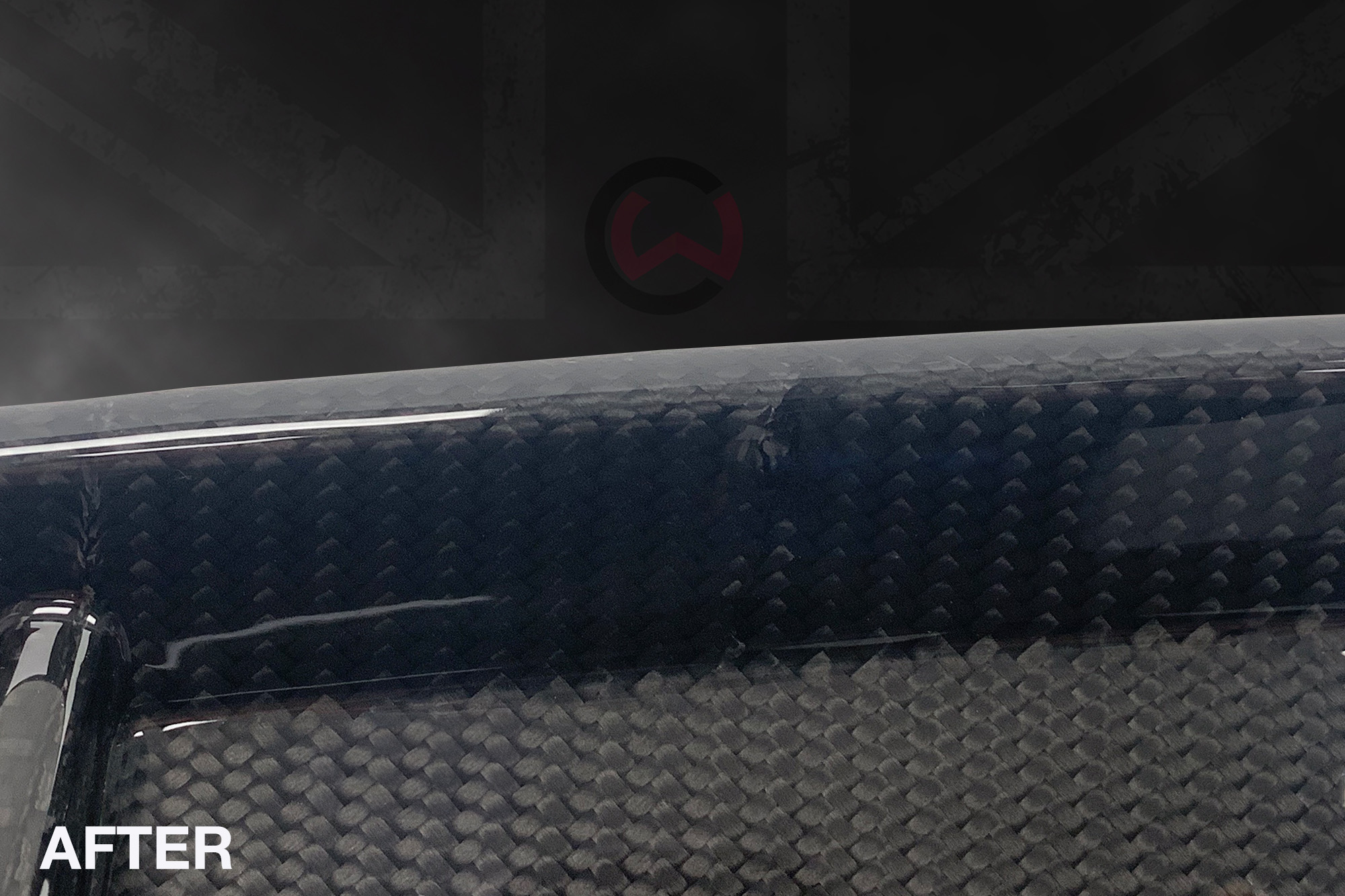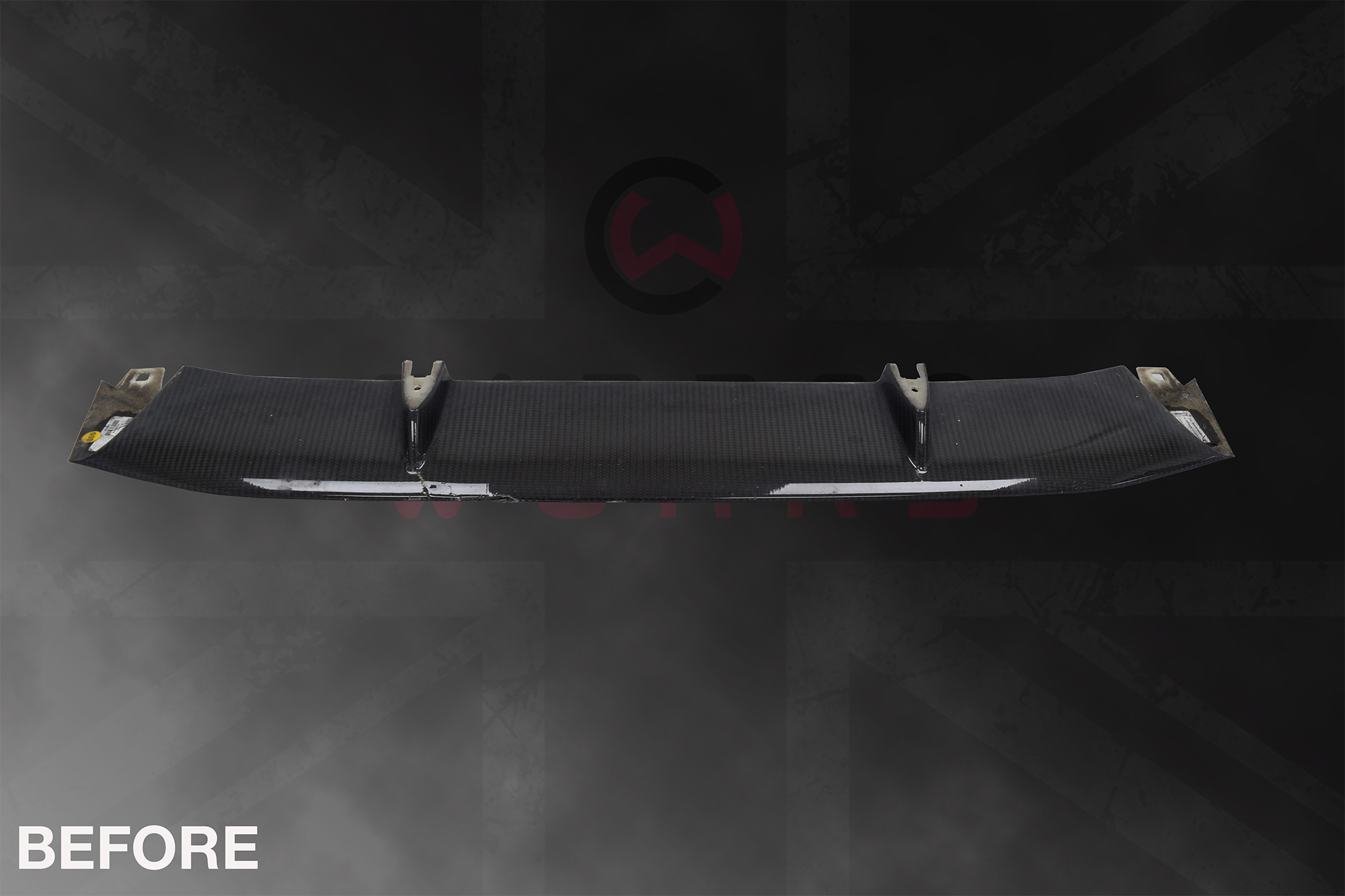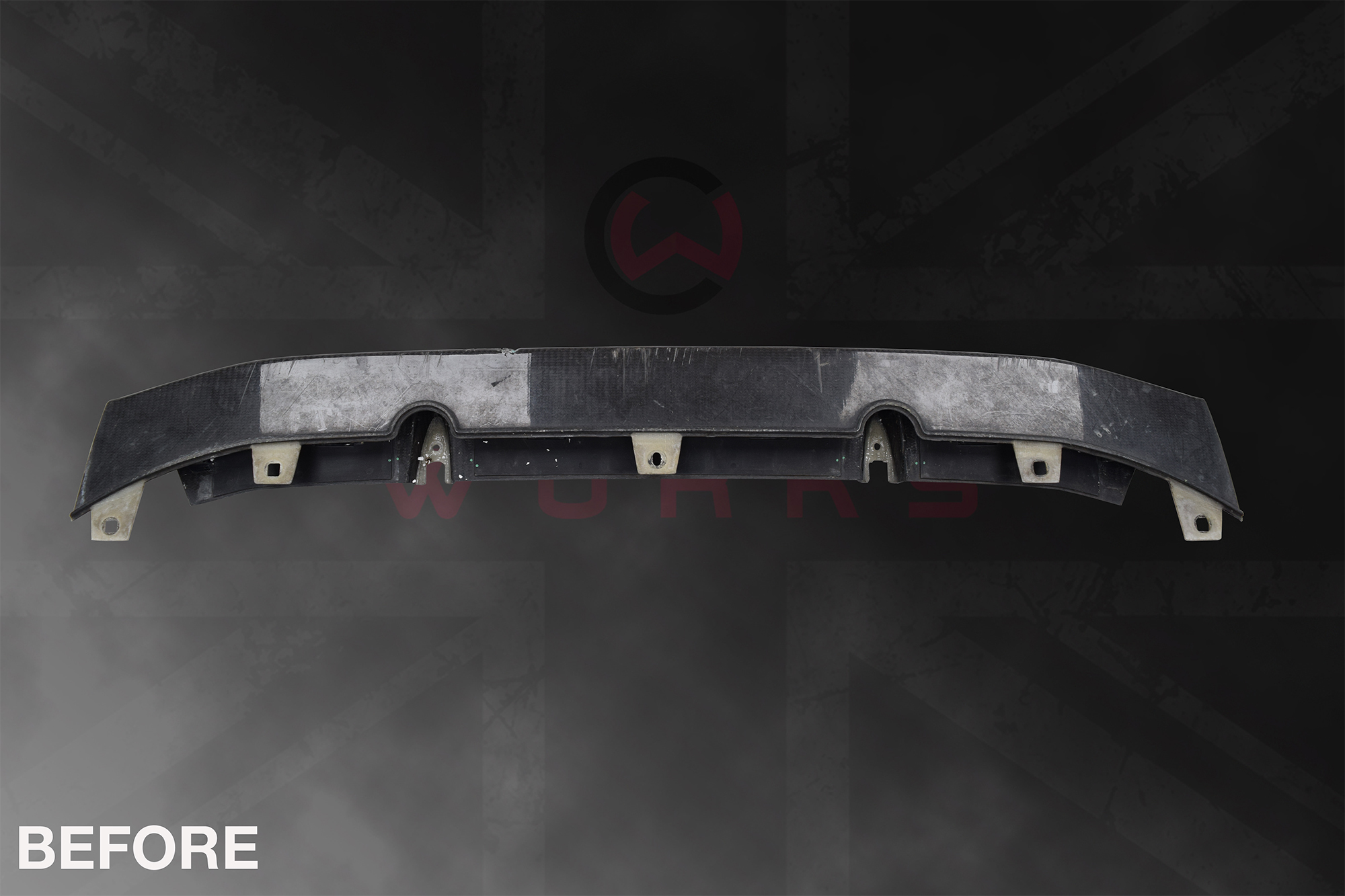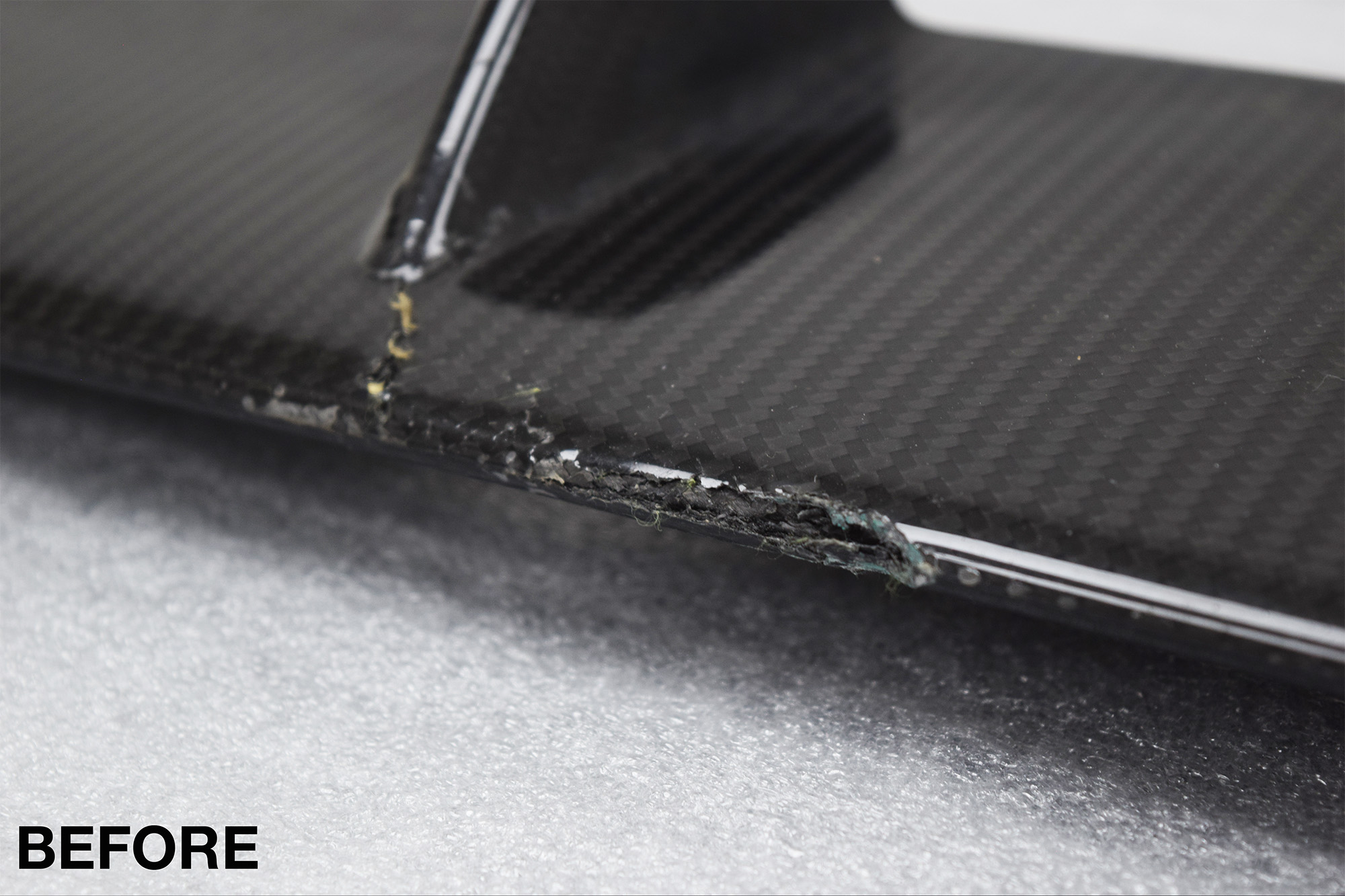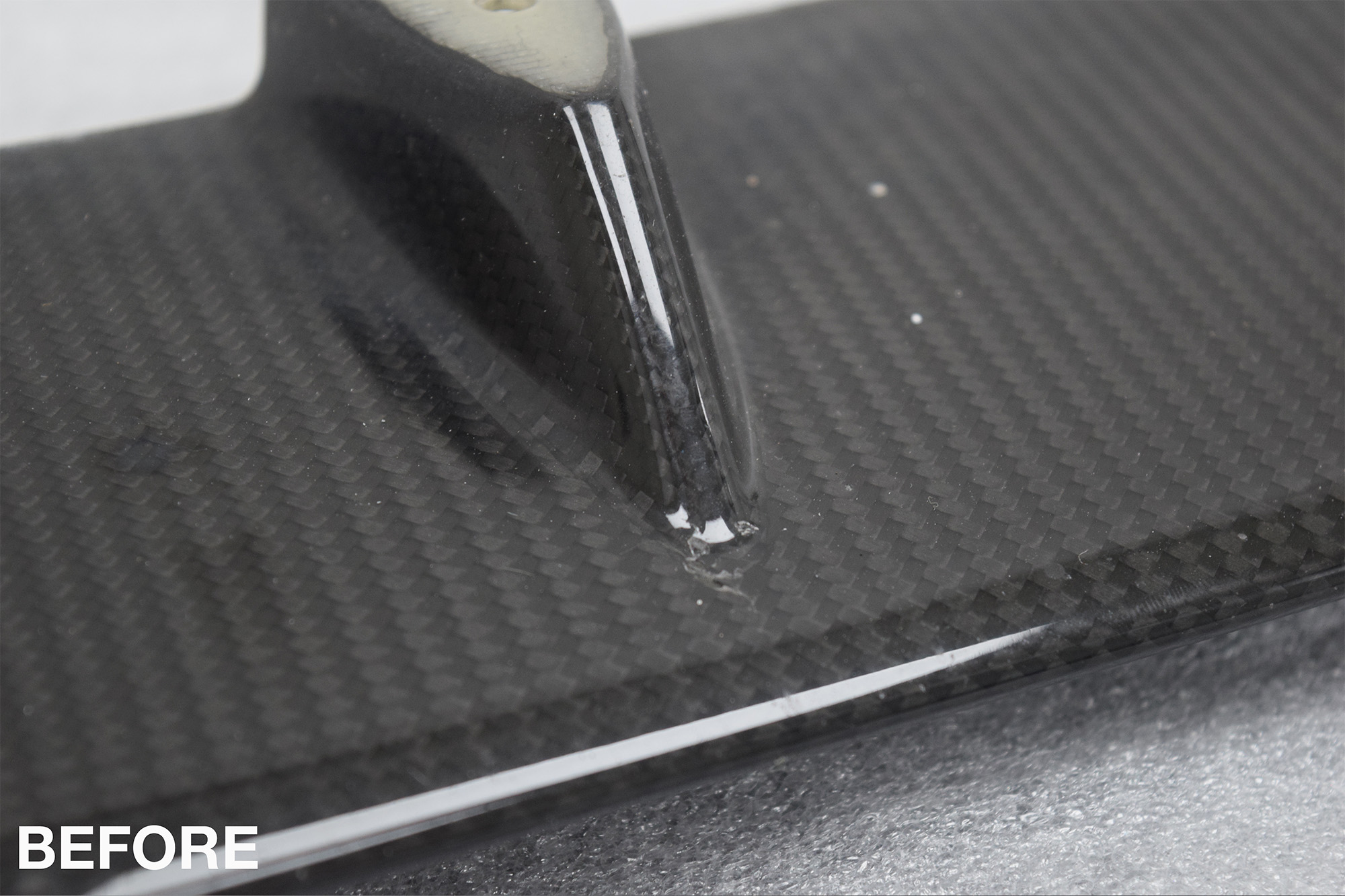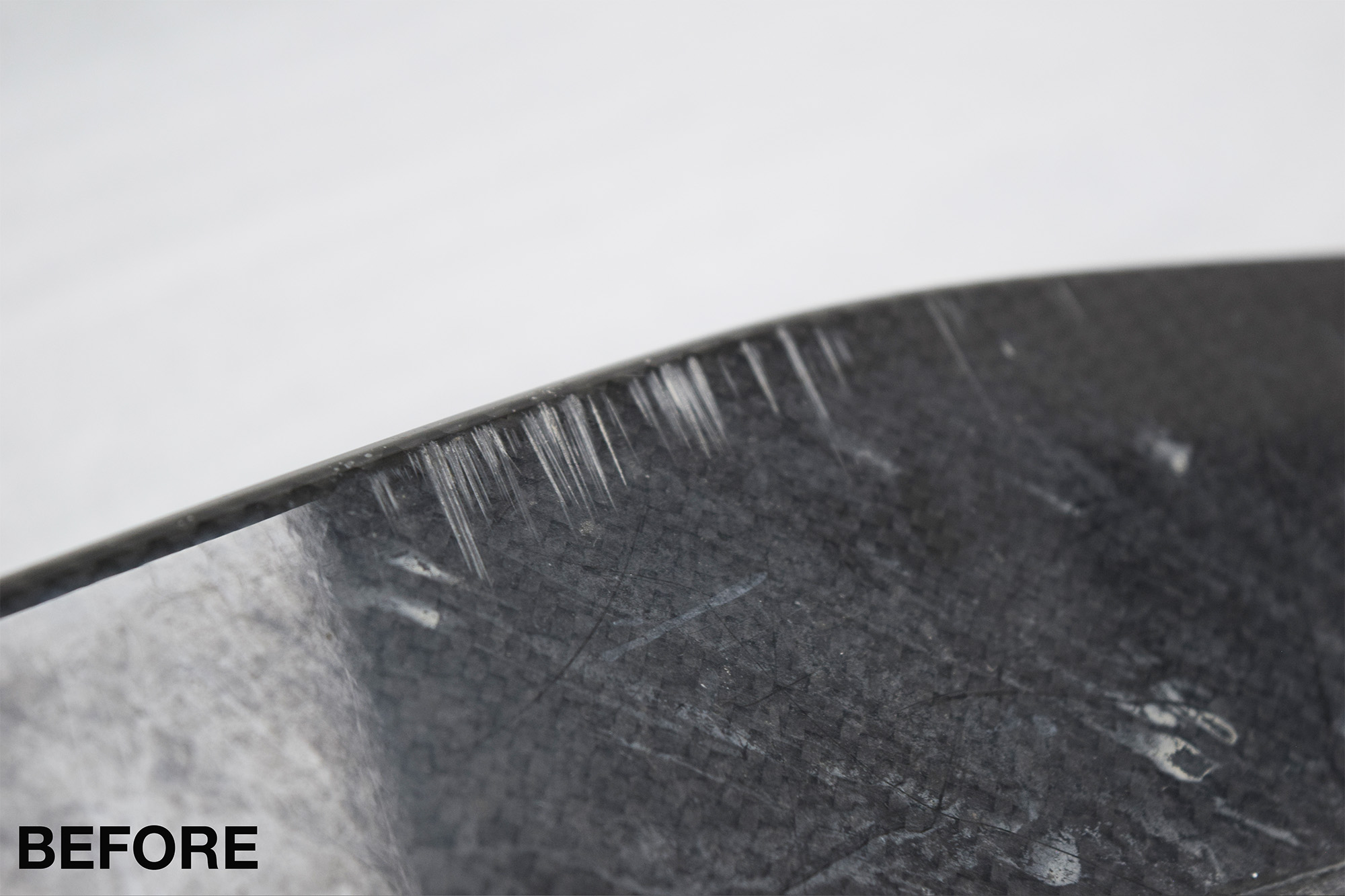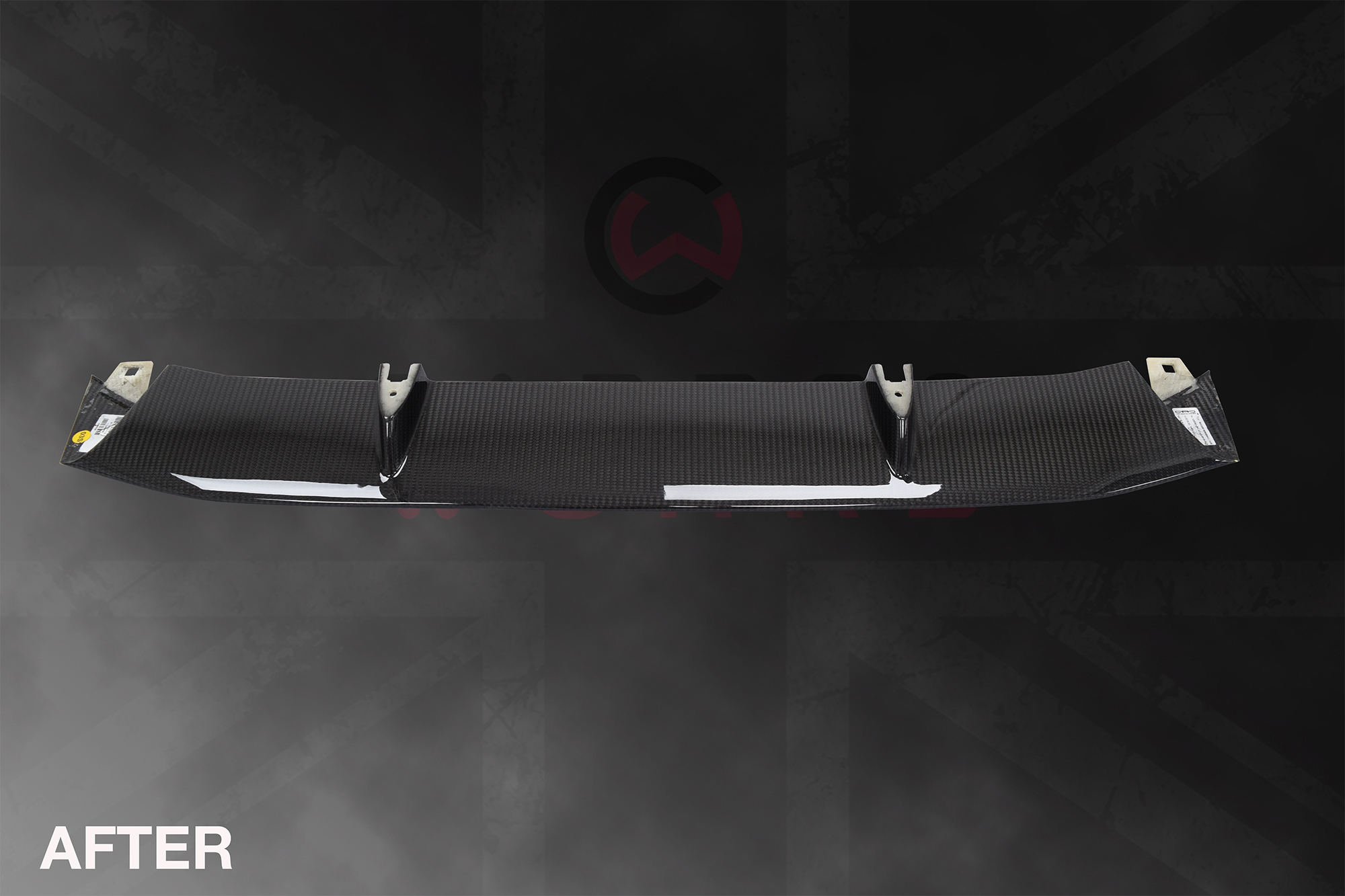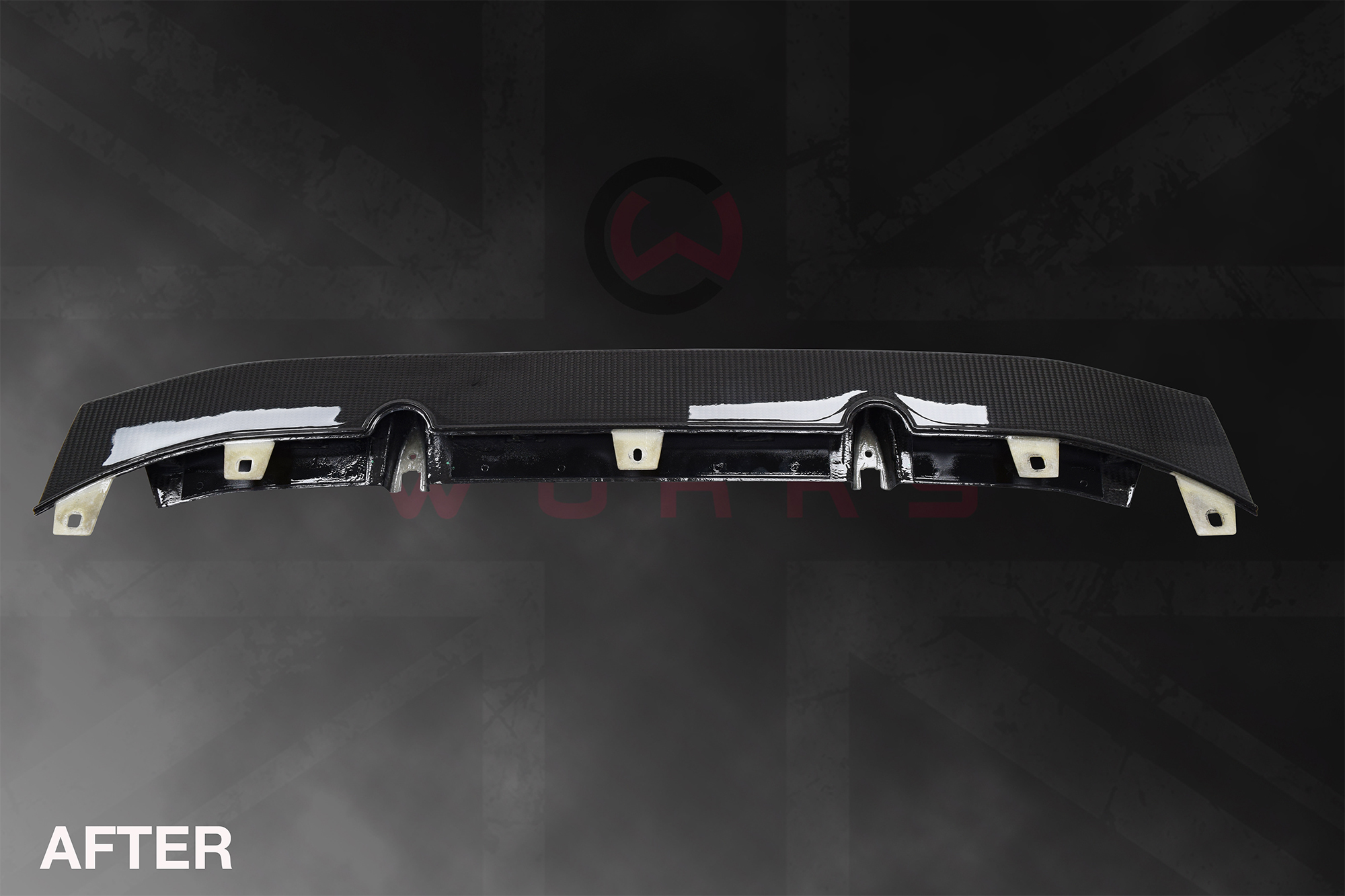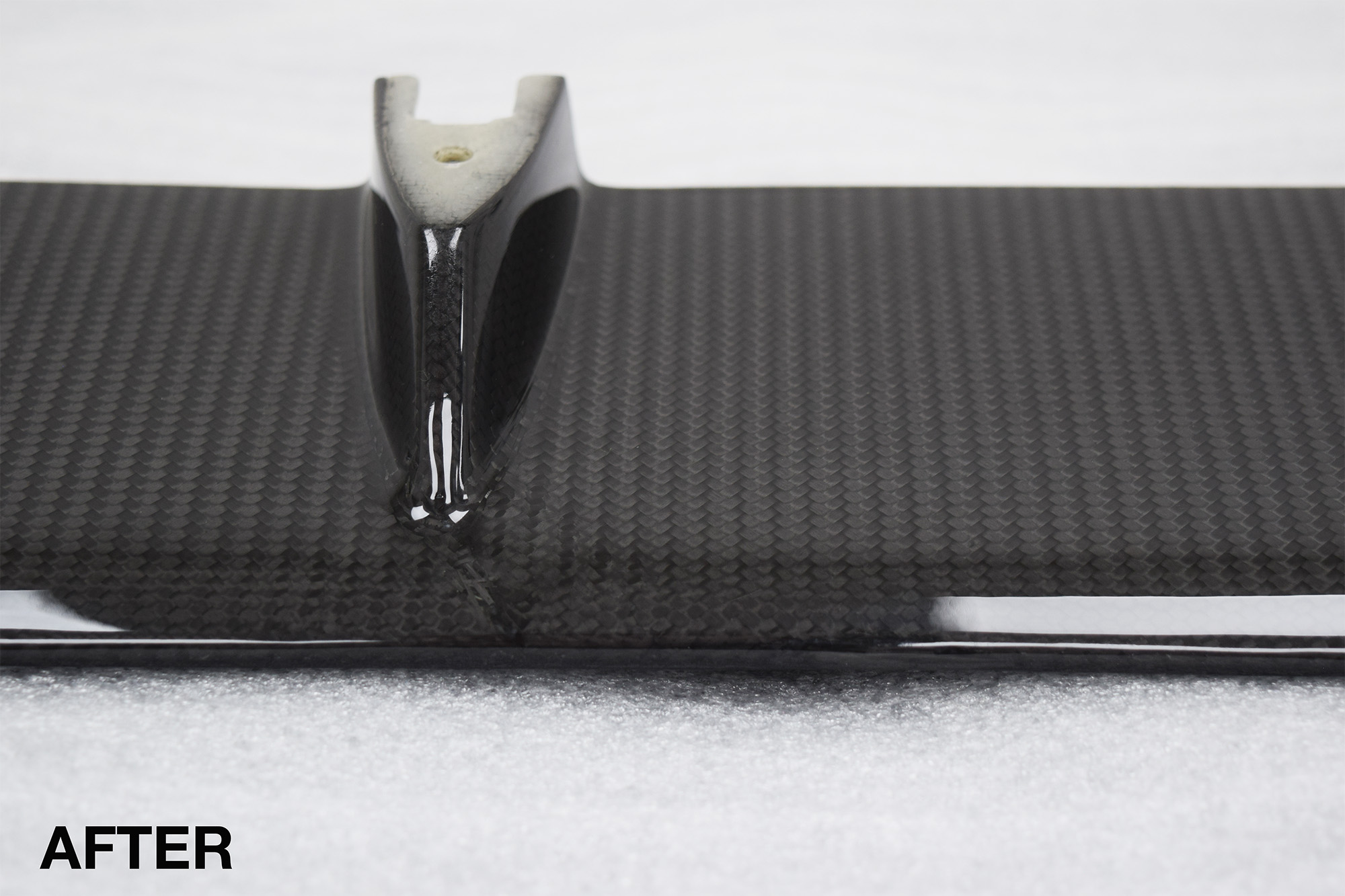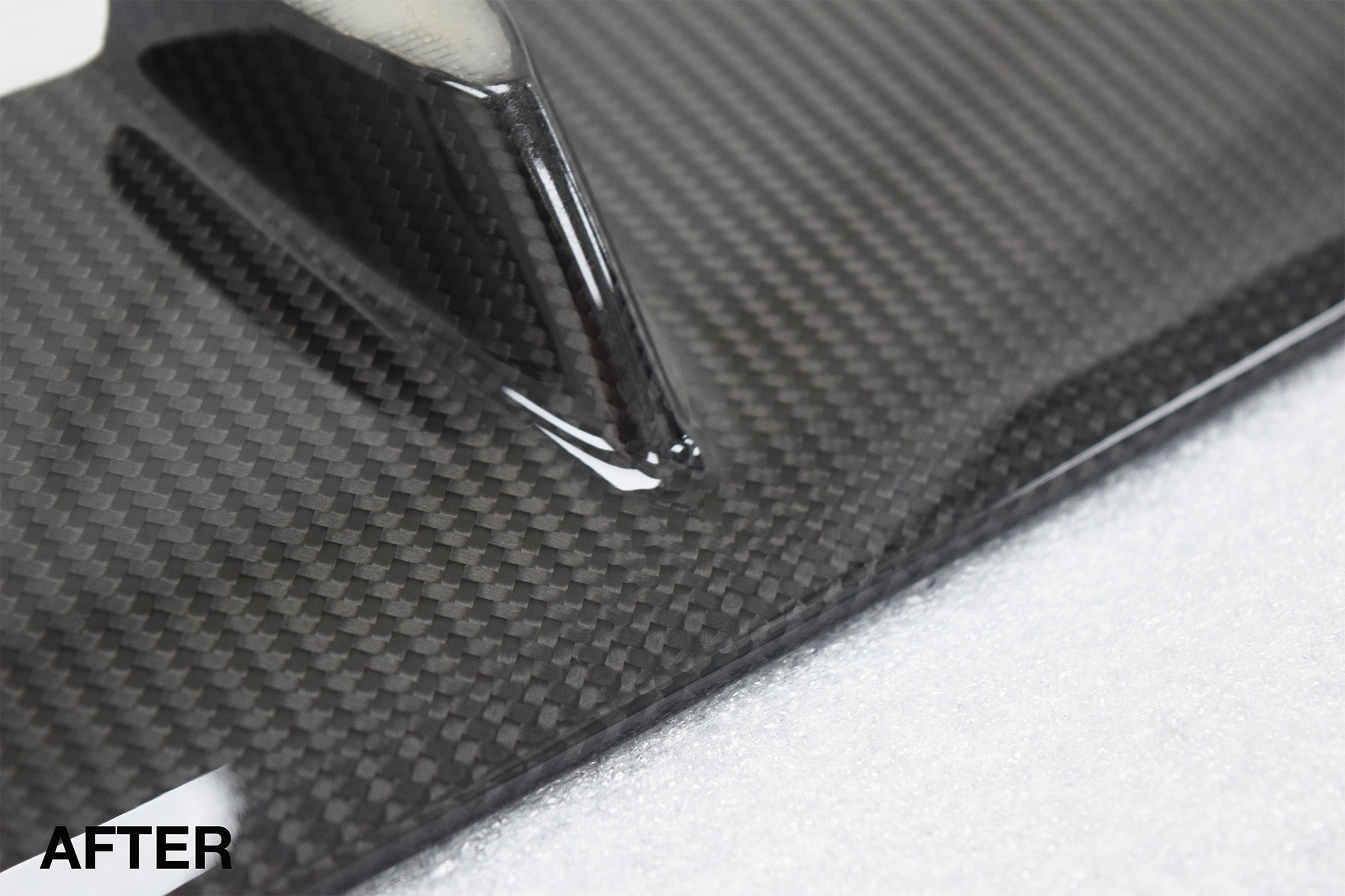Audi Carbon Fibre Repair
Audi Carbon Fibre Repair
Giving Your Audi Carbon A New Lease Of Life
Audi have one of the greatest Motorsports backgrounds which they translate into performance road cars with lightweight carbon fibre components. For many many years carbon fibre has been used on their flagship RS models which has trickled down into the various other Audi model ranges to the point where carbon fibre is very common. With a lot of the models having carbon options, sadly it isn’t uncommon we see damage from day to day incidents. The downside of having this much carbon installed is the cost to replace, fortunately Carbonwurks is at hand to offer a cost effective repair option instead.
Whilst every carbon fibre piece is unique and every damage is different this will massively influence the time involved for the repair as well as the costs.
As we are repairing more high performance carbon fibre than we ever have done, we wanted to really drill down into some of the repairs of these parts to show case the before and after of them as well as explaining what’s involved in the repairs. Below are just a couple of examples of Audi Carbon Fibre Repairs that we have completed recently and a brief explanation about what happened and what was involved with the repair.
We can within reason repair any carbon fibre part on any Audi from exterior parts such as front splitters, rear diffusers, side skirts & rear spoilers to interior parts such as centre consoles & dashboard trims.
Audi R8 (4S) V10 Gen 2
£149,995, 2017, 5.2 L FSI V10 Plus Engine, 610PS
Rear Carbon Fibre Diffuser
Original Part Cost: £9000
Repair Time: 7 Days
- This rear diffuser has been subjected to a few driveway/low kerb accidents. It’s one of the more common types of damages we see which, most of the time can be brought back nearly as good as new without being too intensive.
- This particular diffuser being caught a handful of times had worn through all the protective lacquer and resin. At this stage it was still possible to bring this back to near enough brand new. Addressing this now stops the potential for the carbon to be stained or UV damaged. Also, due to the impacts this diffuser had received, it had also suffered splits on the joins higher up on the part where generally an impact will find the weaker areas of the construction and flex causing cracks/splits.
- With any carbon part, we strip down the lacquer and resin to get to the carbon fibres themselves so we can address any damage first before making the carbon cosmetically perfect.
- On careful inspection, we decided to rebuild the weaker joins on the inside of the diffuser to give better strength and resilience from any future potential knocks. The diffuser was then resin infused to smooth the exterior finish ready for lacquering.
- With all lacquered carbon parts, we flat and polish the finish to give as best as possible shine and obtain surface smoothness. The repair once complete brought the diffuser back to a near enough brand new state with additional strength over it’s original form.
Scroll through the Before & After pictures of this Audi R8 V10 Plus Carbon Fibre Rear Diffuser
Audi RS6 Performance (C7)
£79,495, 2018, 4.0 L TFSI Twin-Turbo V8, 605PS
Rear Carbon Fibre Diffuser
Original Part Cost: £5300
Repair Time: 12 Days
- This RS6 diffuser suffered from a slow speed manoeuvring incident which put a lot of load and force through the carbon fibre. There were several areas that needed to be addressed including various splits & cracks as well as refinishing the whole part for a more uniform finish.
- The first thing we do is inspect the part properly before actioning a strengthening and rebuilding programme to gain structure. Where there were a lot of splits and cracks, we reinforced a lot of the inside to gain strength back and to seal any holes.
- Once the diffuser was structurally sound, we addressed the cosmetics by infusing resin & composites filling to give a smooth finish. The part was then stripped back fully to prep for lacquering.
- With all carbon parts we lacquer to give UV and general protection from the elements. Once lacquered, all parts are given a final flat and polish before being signed off at final quality control.
- Another very expensive diffuser saved for a fraction of the cost it would be to replace.
Scroll through the Before & After pictures of this Audi RS6 Performance Carbon Fibre Diffuser
Audi RS6 Performance (C7)
£79,495, 2020, 4.0 L TFSI Twin-Turbo V8, 605PS
Middle Front Splitter
Original Part Cost: £4300
Repair Time: 12 Days
- This RS6 front splitter had taken several impacts which crushed the carbon and spread the impact load through various areas over the splitter causing fractures.
- Once the damaged areas had been cleaned up and inspected, the first thing to do was make the part structurally sound before addressing any cosmetic areas. Access was limited inside the splitter but reinforcements were laid inside to gain strength and structure back.
- With the structure now solid again, the exterior was brought back to the bare carbon and removing all dead resin. The splitter received various resin infusions to smooth bottom top & bottom.
- As you’ve read with the previous carbon repairs, all carbon undergoes a clearcoat re-finishing to give UV stability and overall protection from environmental factors. With the splitter back from lacquer, final tolerance and quality are undertaken to ensure this part is good to go back on the car.
- With some of these parts becoming very hard to obtain new, repairing is sometimes the only option. Fortunately the customer had a significantly cheaper experience than buying new and this part was only off the car for less than 3 weeks start to finish.
Scroll through the Before & After pictures of this Audi RS6 Performance Carbon Fibre Splitter
Audi R8 (4S) Carbon Fibre Rear Diffuser
so here's what's
Needed From You!
If after reading all the above you want to proceed with getting us to repair your damaged Audi carbon fibre part then we’ll need a few things:
Pictures of the damaged part
We’ll need high quality close up and far away pictures of the item in question so we can see the damage and the overall part. Please ensure you take as many pictures as possible from different angles. If the damage goes through the part then we’ll need to see the rear also
Send over the pictures
Once you have all your pictures you can email them to us at [email protected]. If there is a lot or the files are too big then your best solution is to put them all into a folder, zip / archive them and send them to our WeTransfer Account – WeTransfer.com
Vehicle Info
When you send the photos it would be great to include as much information about the vehicle as possible such as what Audi it is along with Year / Reg or VIN Number. We’ll also need to know how the damage initially occurred.
Once we have all of the above our team of fabricators will look over all the information provided and then come back to you with costings and timescales involved.
Please try to be as accurate as possible with the pictures and the information provided as if we don’t get all the facts prior to the part arriving it may be that extra time and materials may be required which will increase the costs.
For some of the more serious damaged parts it may be that we can’t offer any quote or timings until we have physically seen the item. There is also the possibility that the cost of repair is not financially feasible but we will certainly try to cater as best as we can.
The next step is to get in touch with us using our contact form below:
Frequently Asked
Questions
Often when carbon has damage, the fibres themselves can be fractured and torn. We can bind the part back together along with making it structurally sound but normally if the carbon has suffered cracks, splits or is missing carbon, there will be what we call a “Witness” mark. The best way to think of it is tearing a hole in your jumper, you can stitch it back together, but you may still see a small line where the fabric has been bound back together. Most of the time the witness mark is very small and unnoticeable, other times it can be slightly more obvious depending how bad the damage was. Regardless of this, the end result is as good as can be achieved and saves considerable amounts over replacing the component.
Generally, most repairs do look very good and, in some cases, do look brand new. To re-skin the entire part can be very complicated and very expensive. We try not to go down this route as it’s not always cost effective to do so. We work around the carbon that is there to give the best possible outcome. It’s rare that we would need to consider re-skinning the entire part.
The short answer is yes. We can fabricate small sections and if you still have the snapped off or damaged carbon, we can often make use of this. Depending on the part and the desired end result, sometimes this isn’t cost effective or viable but all the same, this is a type of repair we carry out often.
Very much so. We offer a range of different tinted finishes so if your carbon has a tint to it, we can normally refinish in the same colour.
This will vary massively on the part in need of being repaired. Often aftermarket parts are cheaply made which likely would be cheaper to replace than repair. For higher end, more expensive or rare carbon fibre parts, more often than not it absolutely does make sense to repair as the cost to replace is extremely high or the part is no longer production. We try to cater a repair to the budget of the customer, but we won’t offer a cheap solution if it means compromising the end result.
Sometimes yes depending on where the damage is and the possibility to reinforce. If the part is enclosed, it makes it very difficult to repair behind the damage point and reinforce to suitable level. More often than not however, if we can gain access behind the part, we can make the part as strong or even stronger than before. Carbon manufacturers will only use a handful of layers of carbon, we can add many more layers if required which will increase strength massively.
You can either drop the part off yourself or choose a courier to transport the part to us. We use Parcelforce large for most UK items as they will accept parts up to 2.5 meters in length. If being shipped to us, we do recommend using bubble wrap to protect the part itself along with a cardboard box to ensure the part doesn’t suffer any more damage during transit. If you need help with this element, please do get in touch to discuss as we may be able to help.
Sadly not. The repair process even if it is a simpler and more minor amount of damage, it will still require days of sanding, resin infusing and lacquering. In some cases, we can remove the part from your car here at our workshop (for an additional charge) and you may be able to drive away for a number of weeks until ready to refit.
Although we are capable of removing and disassembly, we prefer not to store any other parts and request the carbon is delivered or dropped off to us in bare form. By this we mean any other elements removed that could get in the way (fog lights, brake lights, trims, cables, fixings etc).
We get asked this quite a lot and the answer is mostly yes. We use specialist high temp resin and cure the part to have the ability to cope with high temperature demands. Often re-finishing/lacquering can be more complicated, but we do have methods to manage this depending on the application.

